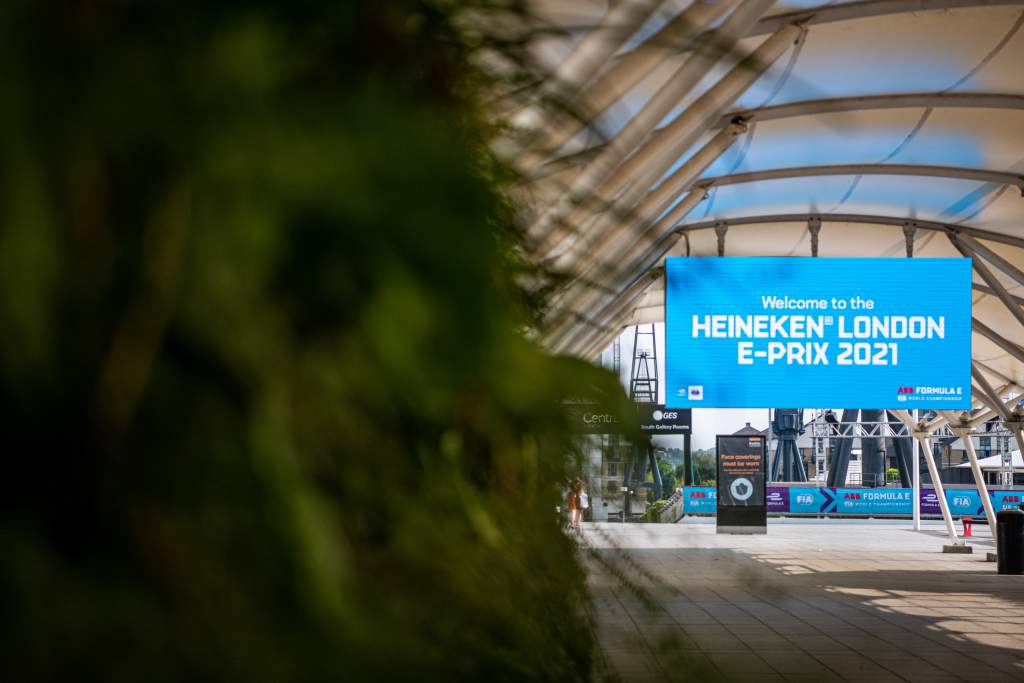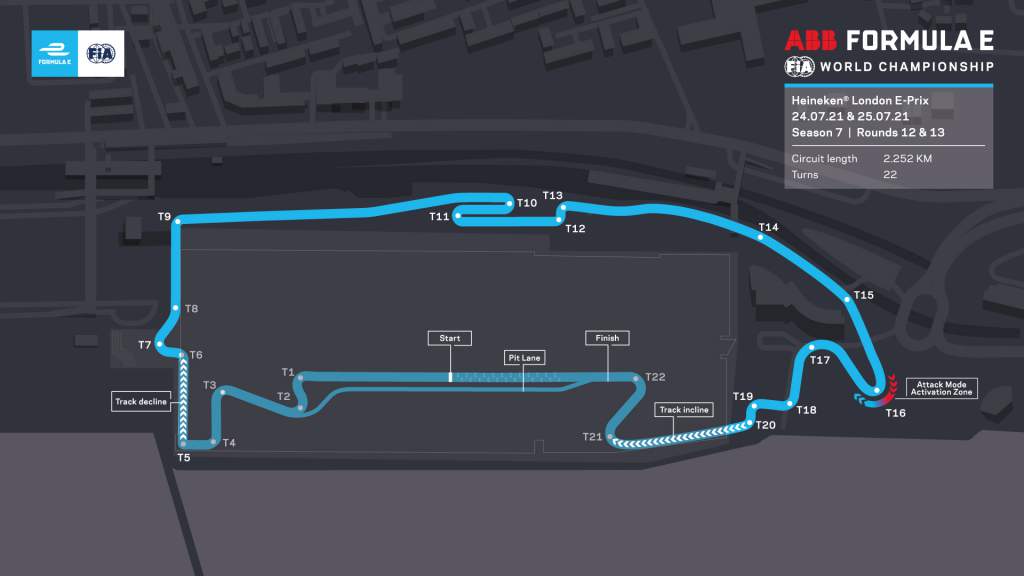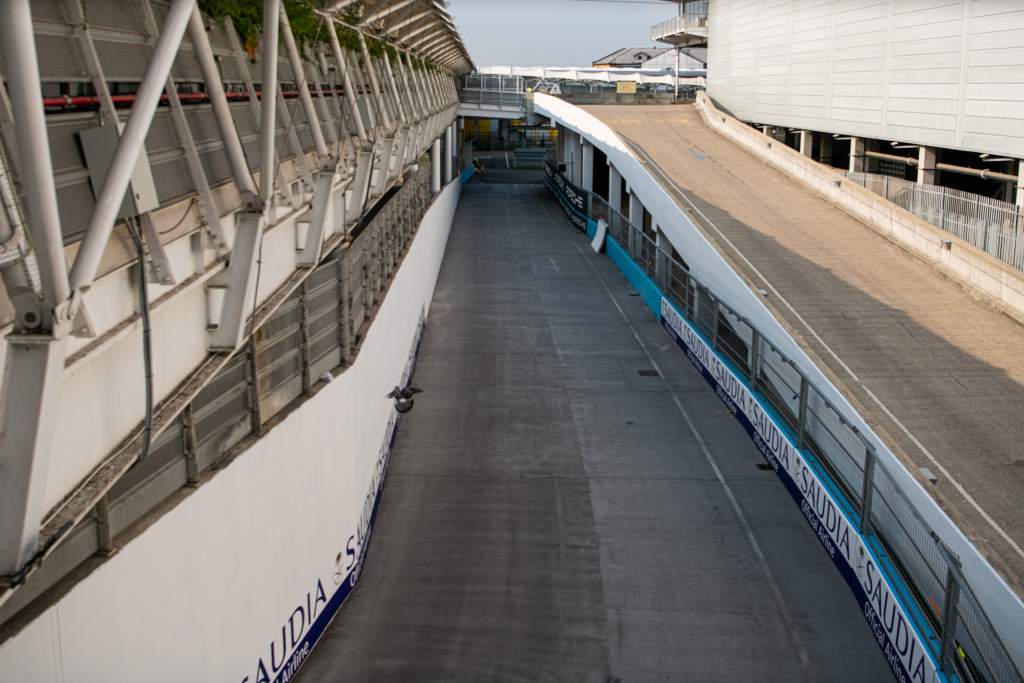Formula E’s London E-Prix races are set to be more or less flat-out contests despite the total available energy allowance having been cut recently.
The 52kWh of energy that can be delivered to the MGUs by the RESS battery has been reduced to 48kWh for the London races this weekend in an effort to stop completely flat-out races occurring.
As well as the FIA being keen to make sure Formula E races feature a degree of energy-saving tactics, running flat-out increased the chances of incidents and red-flagged races, particularly in the 2018/19 season when a discretionary deduction of energy for yellow flag periods or stoppages was not part of the sporting regulations.
But the feeling in the paddock so far is that the energy reduction isn’t enough to prevent the races being close to flat-out given the track configuration created at the ExCeL arena for Formula E’s return to Britain.
The Race reported last week that the FIA will consider being more creative on the attack zone activations for at least one of the London races in an effort to alleviate fears that a train of cars will otherwise just circulate nose to tail.
Attack mode activations give drivers an extra 35kW of power for four minutes during races. The only occasions more than two activations have been permitted so far are the second New York City E-Prix in 2019, at the 2020 Mexico City E-Prix and the second Rome E-Prix earlier this season.

The amount of armings and activations granted to drivers is announced an hour before the start of a race and can be of any denomination that the organisers see fit. At least one additional attack mode is likely to be given this weekend.
Mahindra driver Alexander Sims told The Race he thinks attack mode applications will be as crucial as ever, and that the reduction in usable energy does not go far enough if organisers really wanted to stop flat-out racing and enhance the strategic element.
“As I understand it at the moment that even with the energy reduction, they are likely to be pretty close to flat out driving still,” said Sims.
“With such slow corners, and the concertina effect, I think will mean that there will be reasonable gaps throughout the field from just following each other and accelerating off the very slow corners, so overtaking will be challenging.

“I guess attack mode is going to be pretty crucial to get that right and use the power advantage because you’ll be just driving flat out with that power advantage as such, not having to consume too much less energy and compromise.”
The attack mode will be taken on the outside line at the tight Turn 16 hairpin which then feeds directly into a series of low-speed turns before the cars scale one of the ramps to re-enter the indoor hall section of the racetrack.
Drivers will undertake a track walk this evening and are likely to study where they could possibly overtake on the sinuous and in portions narrow 1.399-mile circuit.

“It’s pretty low speed overall, with relatively short straights as well,” said Sims, whose best result so far is a second place at the second Rome E-Prix in April.
“I think for a 250Kw quali lap, it’s going to be a real challenge to hook everything up together because there are lots of sections where one corner flows into another and into another.
“You get one of those wrong and you’ll be out of synch, so it reminds me a little bit of parts of the additional section we did at Berlin last August.”
“I think it will be fun, but that it will be very crowded out there, and as ever qualifying will be crucial.”




